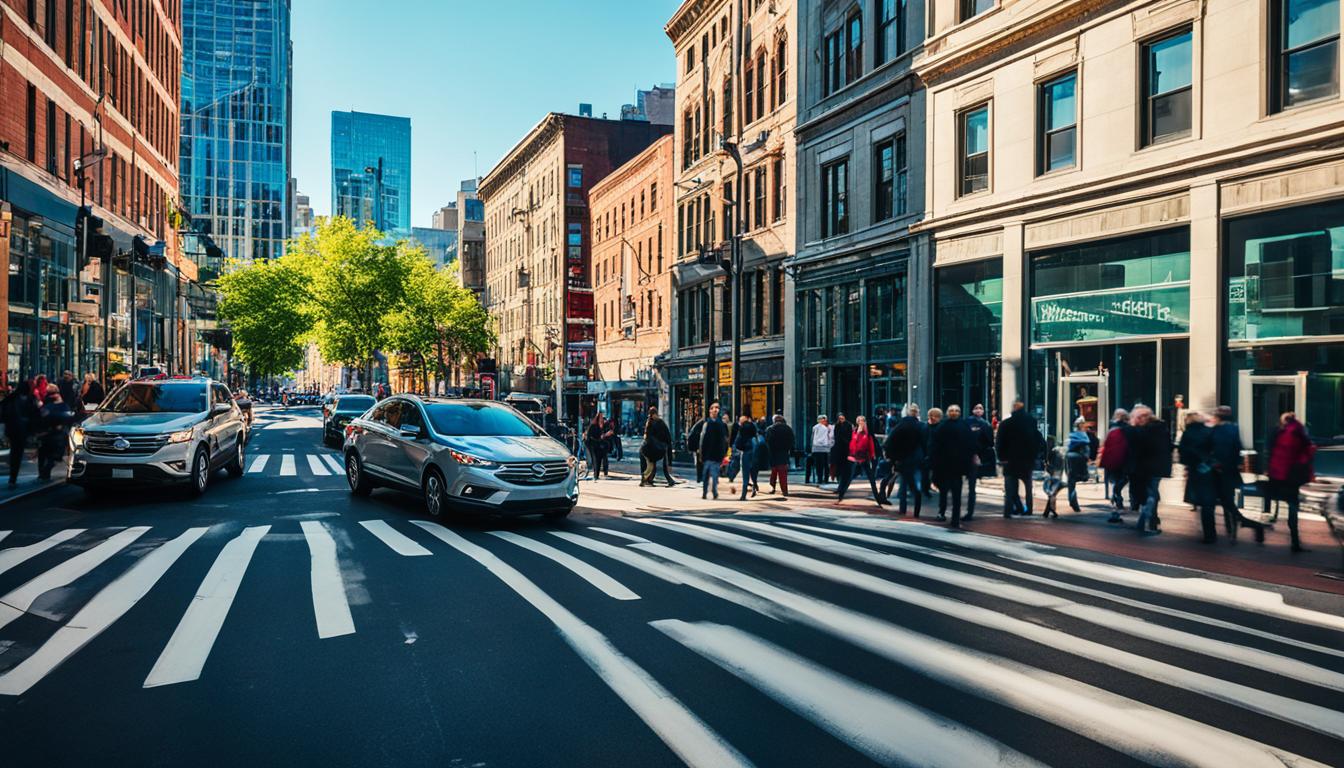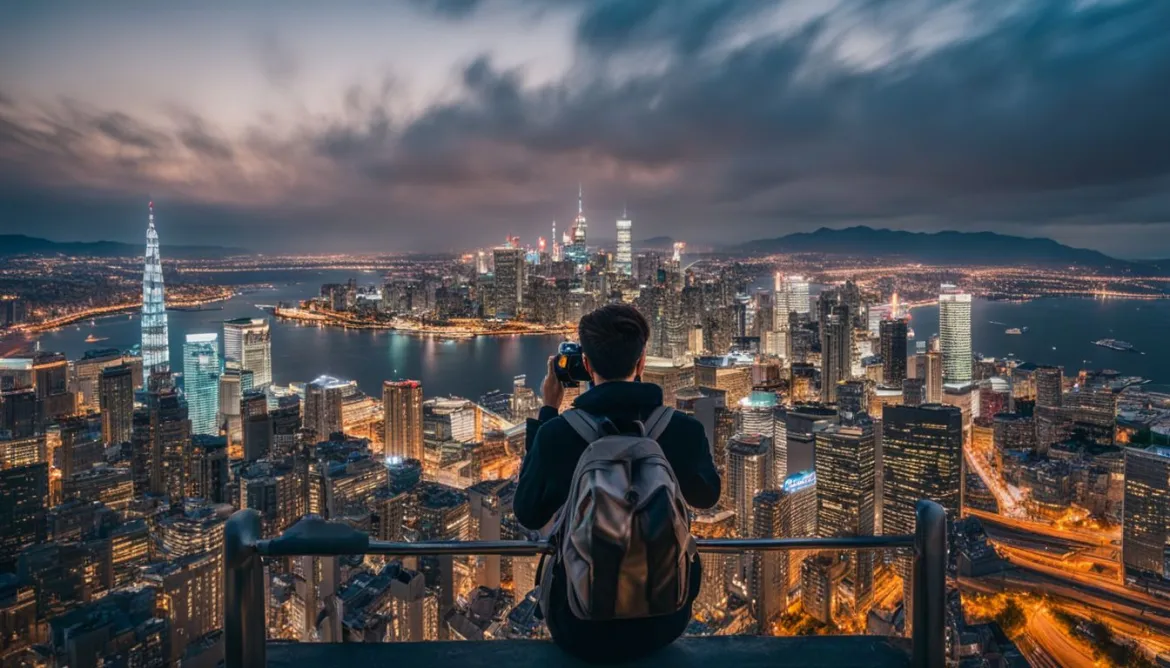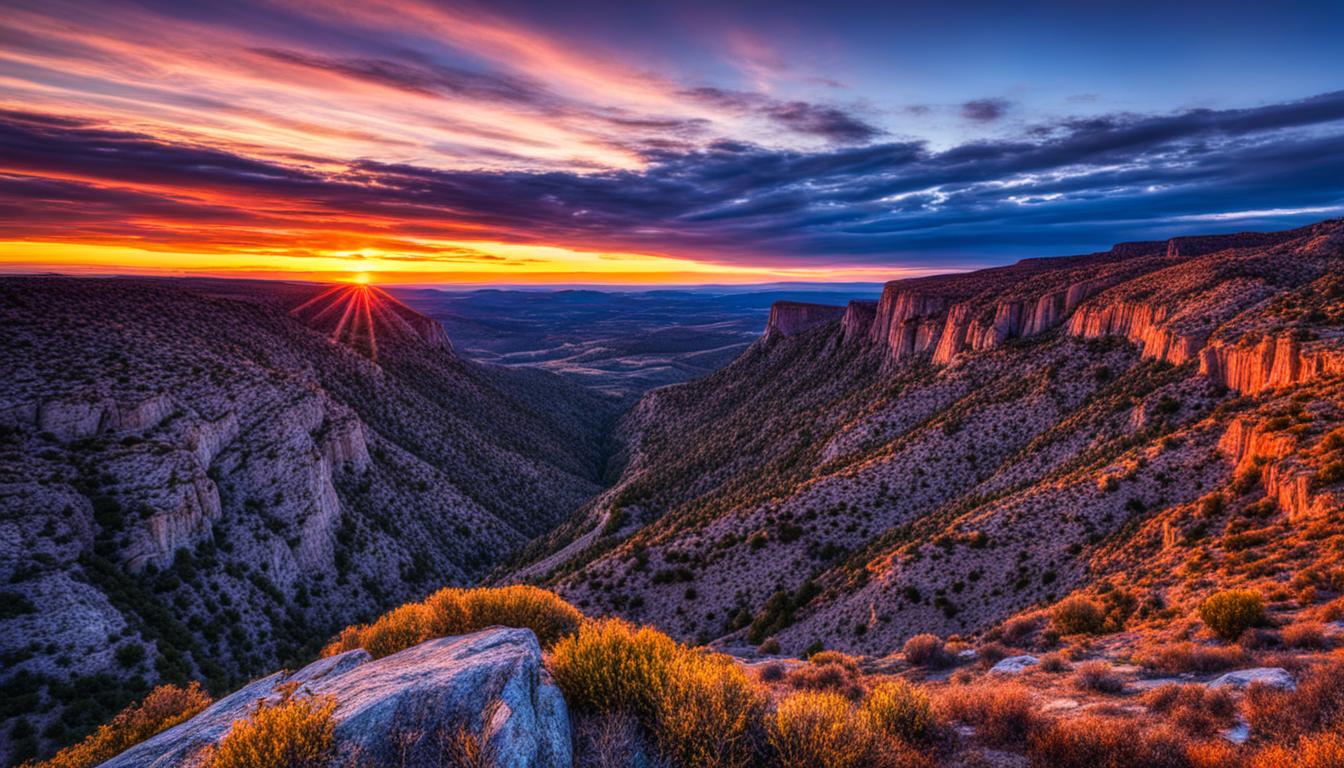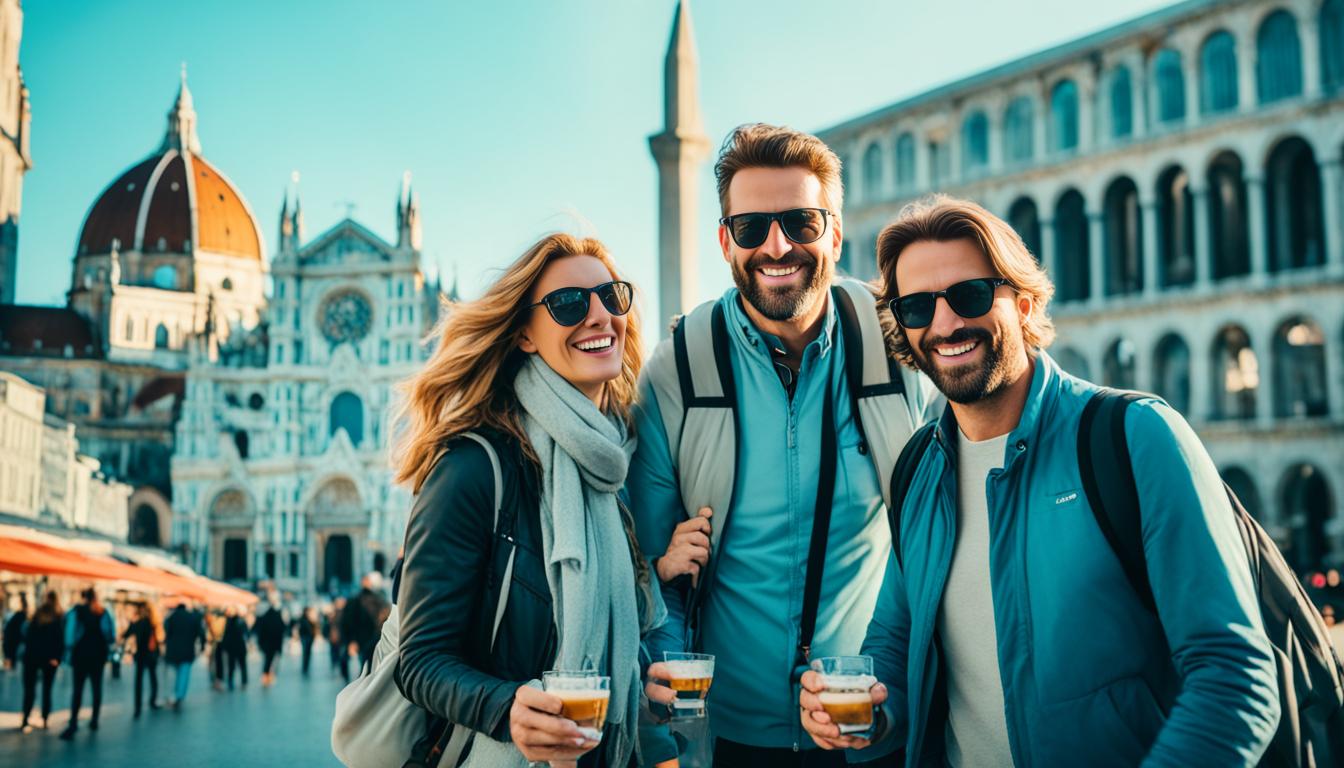Greetings, fellow photography enthusiasts! Today, we embark on a creative journey exploring the captivating world of street photography on your travels. Whether you’re exploring bustling cities, quaint towns, or foreign lands, capturing the essence of urban life through your lens is an exhilarating experience. Join us as we delve into the art of street photography, offering insights and tips to help you master this captivating genre.
Street photography is a truly powerful form of visual storytelling. It goes beyond mere snapshots to convey the stories and emotions of the people and places we encounter. Through carefully composed and thoughtfully captured moments, we can evoke a sense of connection, intrigue, and wonder.
Throughout this exciting journey, we will explore various techniques and approaches that will elevate your street photography skills. From capturing the human presence that brings life and interest to your urban scenes, to mastering composition and design to create impactful images, we will cover it all. We’ll also delve into techniques such as creating motion blur to add energy to your shots and using shadows and reflections to add depth and creativity.
Are you ready to embark on this photographic adventure? Let’s dive into the vibrant world of street photography on your travels and unlock the secrets to capturing the essence of urban landscapes with our expert advice and travel photography tips.
Key Takeaways:
- Street photography is a powerful form of storytelling that captures the essence of urban life.
- Including people in your street photography adds life, interest, and storytelling elements to your images.
- Composition and design play a crucial role in creating impactful street photographs.
- Experimenting with motion blur can add energy and dynamism to your urban shots.
- Street photography offers opportunities to tell stories and evoke emotions through fleeting moments.
The Importance of a Human Presence in Street Photography
When it comes to capturing urban scenes and documenting street life, including people in your street photography can make all the difference. Not only do people add life and energy to your photos, but they also provide a captivating focal point for viewers. Their presence helps tell a story, evokes emotions, and adds a human element to the urban landscape.
While it’s not necessary to have people in every photo, incorporating them strategically can enhance the overall composition of your street photography. By waiting for the right moment or carefully selecting interesting elements like murals or unique architecture, you can create visually engaging images that showcase the essence of the urban environment.
“Including people in street photography adds depth and storytelling to the image. It allows us to connect to the scene and the individuals captured, creating a powerful visual narrative of urban life.”
By including human subjects in your street photography, you have the opportunity to capture the essence of their daily lives, their interactions, and their emotions. It’s a way to document the diversity, energy, and vibrancy of different cultures and communities around the world.
Let’s take a look at an example:
| Photo Example | Explanation |
|---|---|
| In this photo, the inclusion of people adds a sense of scale and context to the urban environment. It showcases the hustle and bustle of city life, with individuals going about their daily routines. The composition is enhanced by the variety of activities and the natural gestures of the subjects, inspiring a narrative of everyday life in the city. |
As you can see, the human presence in street photography brings images to life, making them relatable and compelling. Whether it’s capturing the joy on a child’s face, the determination in a street vendor’s eyes, or the laughter among friends, these moments tell stories and invite viewers to connect with the scene.
In the next section, we’ll explore the importance of composition and design in street photography, as well as techniques to create visually striking images.
Focus on Composition and Design in Street Photography
When it comes to street photography, composition plays a vital role in creating compelling and impactful images. By paying attention to the overall design of the photo and carefully positioning visual elements, you can elevate the impact and storytelling capacity of your street photographs. Let’s explore some key aspects of composition in street photography.
Capturing the Balance Between Subjects and Surroundings
In street photography, it’s essential to capture the symbiotic relationship between subjects and their environment. Framing your subjects within the context of their surroundings can provide valuable insights into the urban landscape and the people who inhabit it. Be mindful of how your subjects interact with their environment and strive to capture the inherent harmony or contrast in their interplay.
Utilizing Leading Lines
Leading lines are a powerful compositional tool in street photography. They can guide the viewer’s eye through the frame, creating a sense of depth and adding visual interest to your images. Look for natural or man-made lines in the urban environment, such as roads, alleys, or architectural elements, that can lead the viewer’s gaze towards your subject or emphasize a specific area of the frame.
Considering the Use of Negative Space
Negative space, the empty areas surrounding your subject, can enhance the impact and focus of your street photographs. By consciously incorporating negative space, you can draw attention to your subject and create a sense of isolation or contemplation. Experiment with different compositions to find the right balance between your subject and the negative space surrounding it.
Now, let’s take a look at an example of how composition and design can elevate a street photograph:
| Before Composition Elements | After Composition Elements |
|---|---|
| A busy street scene with no clear focus or composition elements | Balance achieved by positioning the subject in the intersection of leading lines |
In the “Before” image, the street scene lacks focus and composition elements. It may appear chaotic and overwhelming to the viewer. However, in the “After” image, we can see how composition techniques have been utilized to create a sense of balance and guide the viewer’s attention. By positioning the subject in the intersection of leading lines, the image becomes more visually engaging and conveys a stronger sense of place.
By focusing on composition and design in your street photography, you can bring greater impact and meaning to your images. Understanding the balance between subjects and surroundings, utilizing leading lines, and considering negative space are fundamental techniques to master in order to create stunning urban exploration photographs.
Creating Motion Blur in Street Photography
When it comes to capturing the energy and excitement of the streets, adding motion blur to your street photos can take your images to a new level. This technique allows you to convey the dynamic nature of urban scenes and inject a sense of movement into your photographs.
To create motion blur in street photography, one effective method is to use long exposure. By using a slow shutter speed, you can capture the movement of subjects such as pedestrians or cyclists, resulting in abstract and dynamic effects. Experimenting with different shutter speeds will help you achieve the desired amount of motion blur while maintaining the clarity of your subject.
Remember, the key to successfully creating motion blur in street photography is finding the right balance between capturing movement and keeping your subject in focus.

Incorporating motion blur into your street photography allows you to tell a story through movement. It adds a sense of vitality and action, transforming static scenes into vibrant representations of the urban environment.
Whether it’s capturing the hustle and bustle of pedestrians crossing a busy intersection or the fluid motion of vehicles streaking by, motion blur can evoke a sense of dynamism and convey the fast-paced nature of urban life.
Mastering Shutter Speed
The key to achieving the desired motion blur in your street photographs lies in understanding and manipulating your shutter speed. Experimenting with different settings will help you find the perfect balance between movement and clarity.
Here are some general guidelines to consider:
- Use a slower shutter speed, such as 1/30th of a second or slower, to create longer light trails and blur with moving subjects.
- Try a faster shutter speed, like 1/200th of a second or faster, to freeze the action and minimize motion blur.
- Adjust your shutter speed based on the speed of the subject you want to capture. Slower speeds will create more pronounced motion blur, while faster speeds will freeze the subject’s movement.
Incorporating motion blur into your street photography can add an element of excitement and creativity to your images. It allows you to capture the essence of urban scenes in a way that is visually captivating and unique.
| Benefits of Motion Blur in Street Photography | Techniques to Achieve Motion Blur |
|---|---|
| Movement and energy in photos | Using long exposure |
| Dynamic and abstract effects | Capturing moving subjects |
| Conveying a sense of urban life | Experimenting with shutter speeds |
Telling a Story in Street Photography
In the world of street photography, we have the unique opportunity to capture the essence of urban exploration and document the vibrant tapestry of street life. Through our lenses, we can freeze moments in time and tell captivating stories that unfold right before our eyes. By carefully observing, intentionally framing, and patiently waiting for the perfect moment, we can capture fleeting instances that convey narratives and evoke deep emotions in our viewers.
Street photography allows us to uncover interesting juxtapositions, those serendipitous encounters that showcase the beauty of life’s ironies. Whether it’s the contrast between old and new architecture, the harmony found in a chaotic street scene, or the interaction between people and their surroundings, these visual stories have the power to captivate and stir the imagination.
One way we can enhance the storytelling aspect of street photography is by paying attention to the composition. The arrangement of subjects, the interplay of light and shadows, and the use of leading lines can all contribute to the overall narrative of the photo. (H3: Capturing Interesting Compositions)
By embracing the art of storytelling in our street photography, we can transform everyday moments into extraordinary tales that resonate with our audience. It’s about capturing the essence of a place, the spirit of its people, and the emotions that permeate the air. Through our lenses, we become the documentarians of life, weaving together images that paint a vivid and authentic picture of our urban environments.
As we navigate through the bustling streets, we must remain attentive to those elusive moments that encapsulate the energy and spirit of a scene. These moments often present themselves unexpectedly, requiring our keen awareness and instinct to seize them. It is through this intentional framing and timing that we can convey the narrative essence of street life and create photographs that elicit a profound connection with our viewers.
Let’s take a moment to look at an example of a street photograph that tells a compelling story:
| Photo | Description |
|---|---|
| A street photograph showcasing the beauty of urban exploration. The image captures the silhouette of a lone wanderer walking through an abandoned urban environment. The crumbling buildings and cracked pavement tell a story of decay and resilience, inviting viewers to contemplate the history and mysteries of the place. |
In this photograph, (H3: Analyzing the Composition) the juxtaposition between the solitary figure and the desolate surroundings creates a sense of isolation and curiosity. The use of negative space and leading lines guide the viewer’s gaze towards the central subject, highlighting their presence and emphasizing their vulnerability. The image not only documents the scene but also evokes a range of emotions and invites viewers to imagine the stories and experiences of the person walking through the abandoned urban landscape.
By embracing the storytelling potential of street photography, we have the opportunity to create powerful and thought-provoking images. Every street holds its unique stories, and it is up to us to capture these moments of urban exploration and document the beauty, resilience, and vitality of street life.
Mastering the Decisive Moment in Street Photography
In street photography, capturing the perfect moment is an art that requires a combination of skill, intuition, and anticipation. The decisive moment is that fleeting instance when all the elements align harmoniously, resulting in a powerful and meaningful photograph. It is the culmination of subject matter, mood, composition, and lighting that creates a captivating image that tells a story or evokes emotions.
To master the decisive moment, we as street photographers must develop a keen eye for observation and a deep understanding of our surroundings. We immerse ourselves in the urban life, constantly scanning the environment for captivating scenes and interesting interactions. It’s about being in tune with the pulse of the city and anticipating those compelling moments that unfold before us.
We rely on our intuition to recognize potential moments and react quickly. Sometimes it’s a split second decision to press the shutter, while other times we patiently wait for the right elements to align. This ability to seize the moment separates extraordinary street photographers from the rest.
Anticipating the Decisive Moment
Anticipation is a crucial skill in street photography. It allows us to predict and prepare for those moments that are about to unfold. By studying the behavior of subjects, the flow of people, and the rhythm of the environment, we can position ourselves in the right place at the right time.
“Photography is more than a medium for factual communication of ideas. It is a creative art.” – Ansel Adams
Being proactive rather than reactive, we can anticipate the decisive moment and be ready to capture that instant before it disappears forever. It’s about having our camera settings dialed in, our composition framed, and our finger on the shutter button, poised to freeze that special moment in time.
Capturing Urban Life’s Essence
When we successfully capture the decisive moment, we immortalize a slice of urban life in all its raw and authentic glory. Our photographs become a testament to the vibrant energy, diversity, and stories of the people who inhabit the city streets.
Whether it’s a fleeting expression, a serendipitous interaction, or a unique moment of stillness amid the chaos, our images serve as visual narratives that connect viewers to the essence of urban life. They evoke emotions, spark curiosity, and transport us to a particular time and place.
Embracing the Challenge
Mastering the decisive moment in street photography is challenging and requires discipline, patience, and practice. It’s a constant pursuit of refining our skills and honing our instincts. Each day presents new opportunities for growth and the chance to capture that next extraordinary moment on the streets.
So, as street photographers, let us immerse ourselves in the urban rhythm, keep our senses sharp, and be ready to seize that perfect moment. Through our images, we can inspire others to see and appreciate the beauty and complexity of urban life.
Getting Creative with Shadows and Reflections in Street Photography
When it comes to street photography, shadows and reflections are not just incidental elements; they can be transformed into powerful tools for creative expression. By understanding how light interacts with different surfaces, we can harness the potential of shadows and reflections to add depth, intrigue, and a touch of artistry to our images.
Shadows, with their mysterious and elusive nature, can create a sense of drama and evoke emotions in the viewer. They can be used to emphasize certain elements, create interesting patterns, or even form the main subject of the photograph. Paying attention to the play of light and shadow allows us to capture the interplay between darkness and illumination, resulting in captivating compositions.
Incorporating reflective surfaces in street photography opens up a world of possibilities. From shiny windows and mirrors to glossy floors and puddles, reflections enhance the visual experience by offering multiple perspectives and layers of reality. By strategically positioning ourselves and our subjects, we can create stunning photographs that blur the line between what is real and what is reflected.

By using shadows and reflections effectively, we can transform ordinary scenes into extraordinary works of art. Whether it’s the silhouette of a person against a colorful backdrop or the distorted reflection of a bustling city street, these elements can elevate our street photography to new heights.
Conclusion
Street photography offers a unique and captivating glimpse into the essence of urban life. It goes beyond capturing images of people on the streets and delves into the art of storytelling, evoking emotions, and showcasing the beauty and diversity of our urban environments.
By employing various techniques such as thoughtful composition, the creative use of motion blur, and capturing interesting shadows and reflections, street photographers can create compelling and impactful images that resonate with viewers.
Whether you’re traveling or exploring your own city, delve into the world of street photography. Uncover the hidden stories and intimate moments that unfold on bustling city streets. Allow your camera to serve as a vehicle for artistic expression, capturing the urban essence and reflecting the vibrant tapestry of urban life. Start your journey into this captivating genre of photography and unveil the extraordinary within the ordinary.
FAQ
Is street photography limited to urban environments?
No, street photography can be done anywhere, including small towns and foreign countries. It is about capturing stories and moments that convey the essence of the people and places.
Why is it important to include people in street photography?
Including people in street photography adds life and compositional interest to the photos. Their presence can help tell a story and evoke emotions in the viewers.
How can I enhance the composition in my street photography?
Composition is crucial in street photography. Paying attention to the overall design of the photo and the positioning of visual elements can elevate the impact of the image. Capturing the balance between subjects and their surroundings, using leading lines, and considering the use of negative space are all important aspects of composition in street photography.
How can I add motion blur to my street photos?
Adding motion blur to street photos can add energy and excitement. Using long exposure and capturing moving subjects such as pedestrians or cyclists can create abstract and dynamic effects. Experimenting with different shutter speeds is key to achieving the desired amount of motion blur while maintaining the clarity of the subject.
How can I tell a story through street photography?
Street photography offers opportunities to capture interesting juxtapositions, unique behaviors, and spontaneous expressions that tell a story about the subject or the environment. Intentionally framing the shot and waiting for the right moment can enhance the storytelling aspect of street photography. The goal is to capture fleeting moments that convey a narrative or evoke emotions in the viewers.
What is the decisive moment in street photography?
The decisive moment is the perfect alignment of subject matter, mood, composition, and lighting. It is the ephemeral moment when everything comes together to create a meaningful or artistic photograph. Street photographers strive to capture these moments by observing and anticipating the scenes unfolding around them. The ability to recognize and react to the decisive moment is a key skill in street photography.
How can I get creative with shadows and reflections in street photography?
Shadows and reflections can add depth, intrigue, and creativity to street photography. They can be used as compositional elements or even become the focus of the photograph. Paying attention to the play of light and shadow, as well as incorporating reflective surfaces, can result in unique and visually captivating images.
What is street photography about?
Street photography is a versatile and expressive genre that goes beyond capturing images of people on the streets. It is about capturing the essence of urban life, telling stories, and evoking emotions. By utilizing various techniques such as composition, motion blur, storytelling, and creative use of shadows and reflections, street photographers can create compelling and impactful images that showcase the beauty and diversity of the urban environment.




